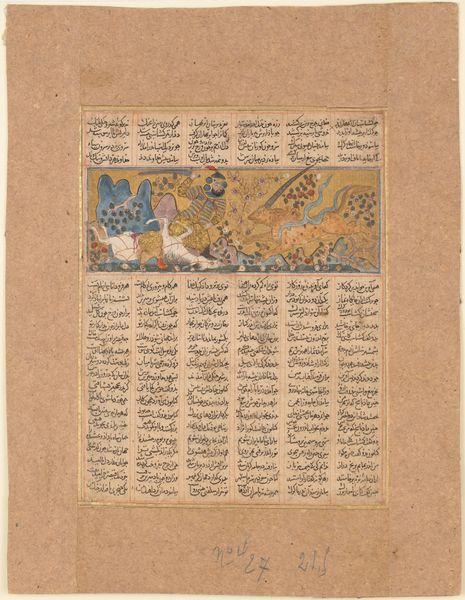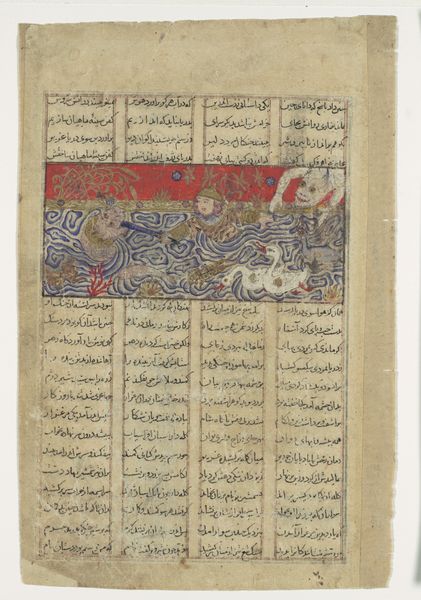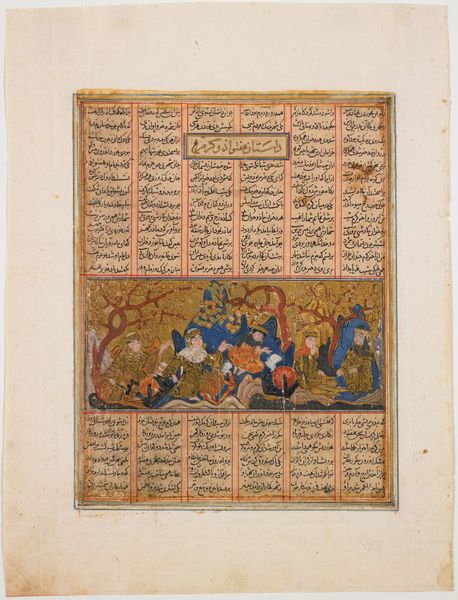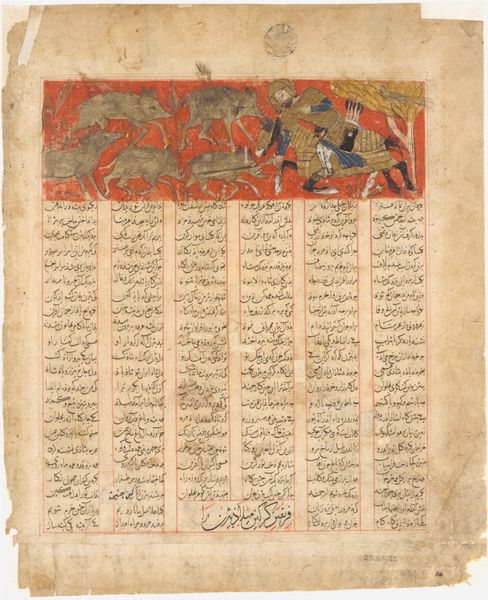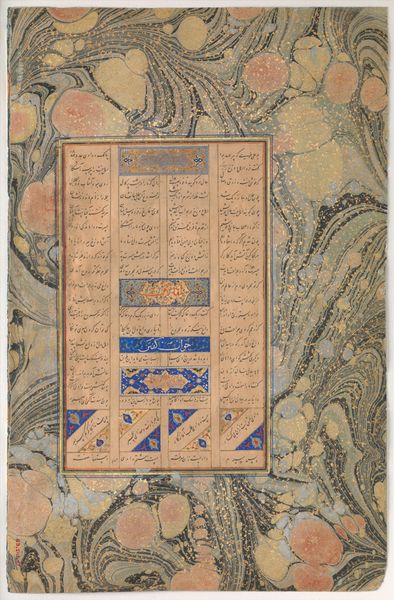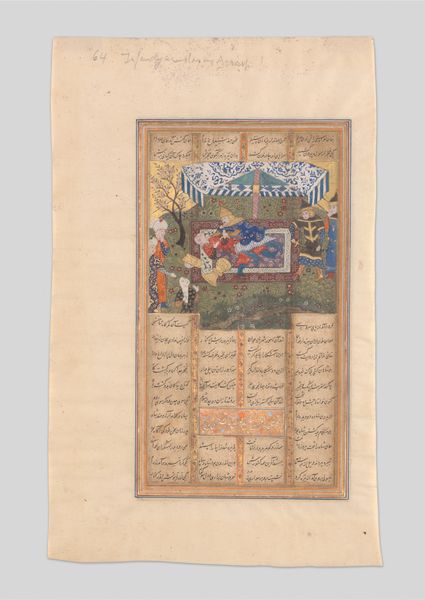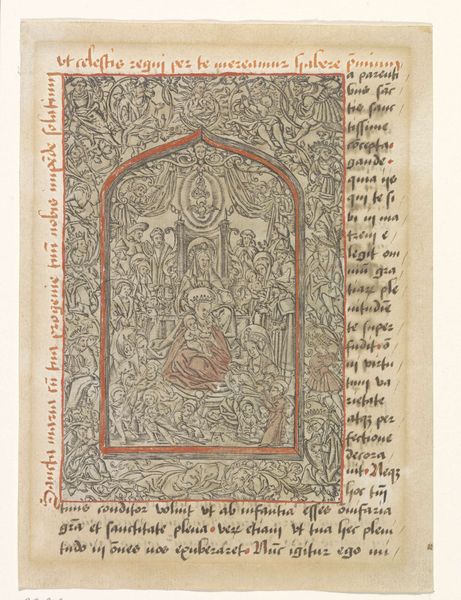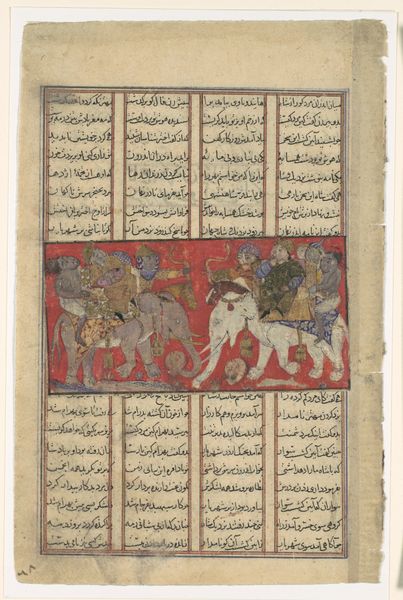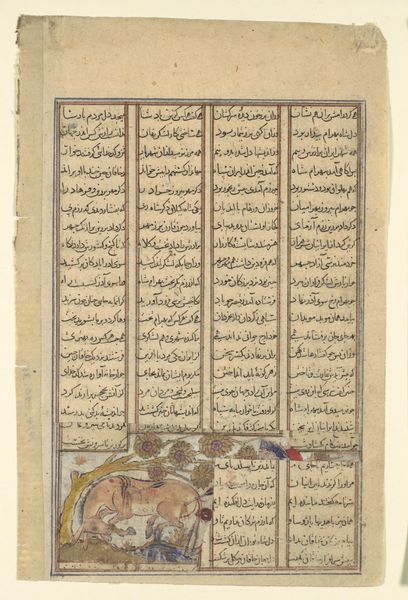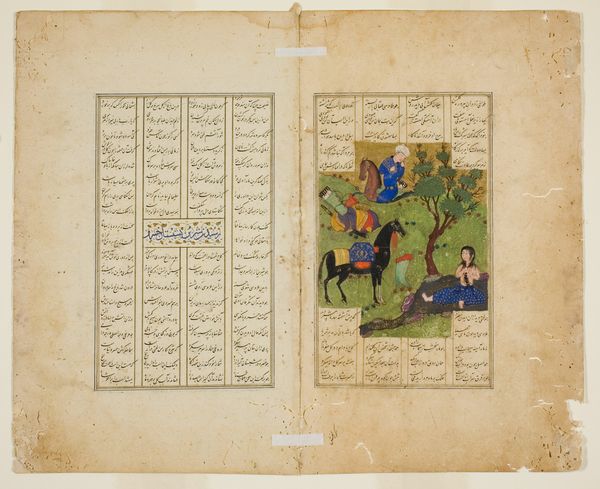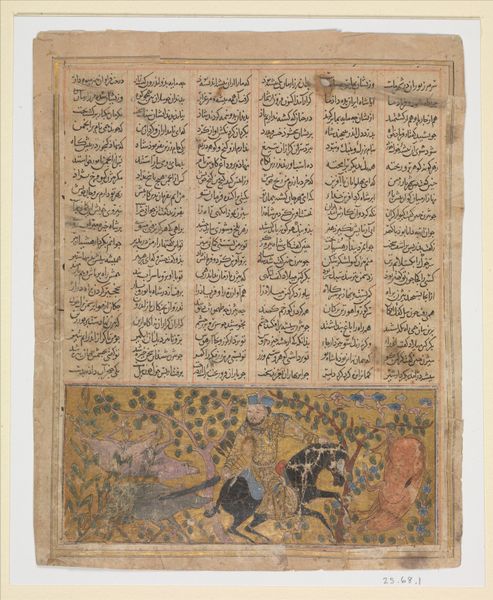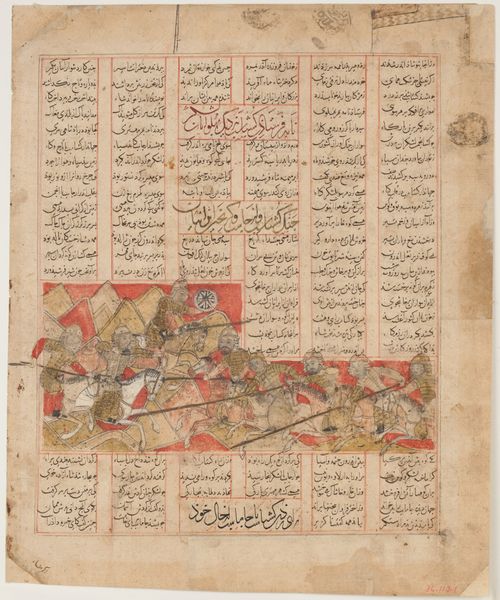
painting, gold, gold-on-paper, paper, watercolor
#
narrative-art
#
painting
#
asian-art
#
gold
#
landscape
#
gold-on-paper
#
figuration
#
paper
#
watercolor
#
islamic-art
#
miniature
#
calligraphy
Dimensions: 10 1/2 x 7 7/16 in. (26.7 x 18.9 cm)
Copyright: Public Domain
Editor: This piece, titled "Rakhsh," dates back to around 1300. It’s an anonymous work from the Asian Art collection at the Minneapolis Institute of Art, made with watercolor, gold and ink on paper. I'm struck by the contrast between the violence of the scene depicted and the delicate beauty of the miniature style. How do you interpret this work? Curator: That contrast you noticed is key. Looking at this painting, I see a visual representation of power dynamics during that period. Islamic miniature paintings often served to illustrate epic tales. How might this image speak to those dynamics, especially concerning gender, class, or ethnic tensions present in the narrative it comes from? Editor: Hmm, I hadn't considered that specifically. I was more focused on the immediate scene—a horse injured by, maybe even fighting a lion… or is it a tiger? I guess it depends on the artistic license the painter was using. Curator: Precisely! It's not just about the literal depiction of animals, but the symbolism they carry. What does it mean to portray such a powerful animal as being vulnerable? Could this be a commentary on leadership, perhaps, or even the fleeting nature of power itself? Also, consider the positionality of the artists who created this miniature. They were often working for a specific patron, right? So whose stories were being told, and whose were being excluded? Editor: So, by understanding the social and historical context, we can see beyond the surface level of the artwork to understand bigger themes like the use and abuse of power? It’s a perspective I’ll definitely keep in mind. Curator: Exactly. It's about viewing the artwork as a historical artifact that has complex connections to philosophical, feminist, and sociological ideas. Approaching art with intersectional understanding like this makes its reading that much more fascinating.
Comments
minneapolisinstituteofart almost 2 years ago
⋮
This illustration succinctly captures an iconic moment in the Shahnameh, when one of its great heroes, Rustam, falls asleep in a thicket of reeds. A lion attempts to attack, but Rustam’s legendary horse, Rakhsh, swiftly intercedes and kills the lion with his bare teeth. Note the pattern on Rakhsh’s body, which Rustam describes as “a wonder to behold; like saffron petals, mottled red and gold.” Bravery and loyalty are persistent themes throughout the Shahnameh, particularly in scenes with Rustam, a warrior who serves a succession of kings and is seen here on a quest to save King Kavous from a demon.
Join the conversation
Join millions of artists and users on Artera today and experience the ultimate creative platform.
